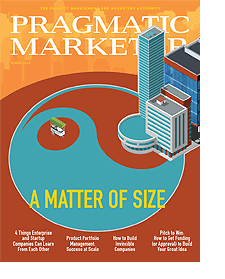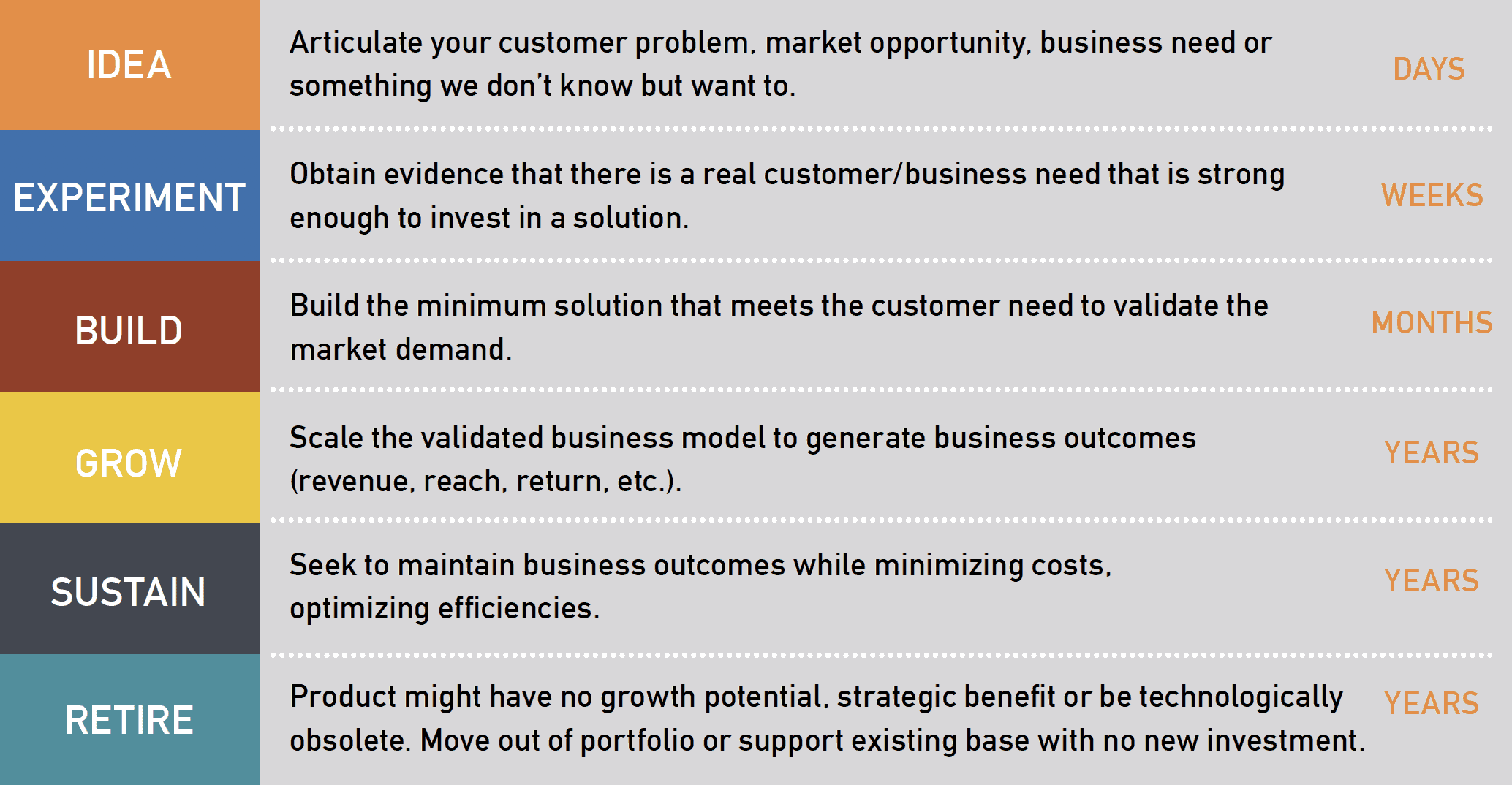This article originally appeared on MindtheProduct.com.
Product management can be hard enough, but when you scale beyond more than one product, product portfolio management is a critical tool to prioritize between multiple products, assign resources to the right products and ensure you have a pipeline of new product ideas ready to grow.
Whether you’re in a small but growing company or a large established enterprise, you will tend towards the status quo. It’s easy to get stuck following the same patterns that got you to this point. Focusing on your established cash-cow product to the detriment of the others is a natural bias. But this can spell doom for your company. If that product is declining, you’re flogging a dead horse and letting it suck up all the resources in your company. And the bigger you are, the more likely this is to be true.
It’s imperative that you always consider every product in your portfolio in an objective manner. This starts with an honest assessment of where every product sits today.
Map your Product Portfolio
Product portfolio management starts with gaining clarity by mapping out all your products, so you know what stage each one is at. Whether you call it the product life cycle, stage gates, or “explore, exploit, sustain, retire,” it’s about classifying all your products into groups so that you can compare like with like and ensure they get the appropriate level of resource investment.
The Product Portfolio Management Life Cycle
Most products follow a natural life cycle, from introduction, through growth, to a (hopefully long) period of sustained maturity, followed by an inevitable declining sunset period.
Introduction
In the beginning, there was an idea.
This is where all your new products live, where you’re exploring new ideas and focused on customer development to understand which ideas might be valuable enough to actually build on.
It can be valuable to further split this into two groups. First, new product ideas, where you focus only on customer research. Then, once you have a validated customer problem, product testing, where you start building MVPs (or RATs) in order to test solutions to those problems and find product/market fit.
Growth
Once you’ve achieved product/market fit, it’s time to accelerate the growth of that product. Only now do you invest heavily, assign marketing resources, and start to build business and scaling plans.
Maturity
In maturity, it’s all about sustaining an established business, so the focus shifts again to optimization and finding efficiencies of scale and operations.
Decline
Eventually, all products start to decline. Some take days to hit this point, some take years; there is no hard-and-fast rule. If you’re doing your job right, you can extend the time before this period, but it will come eventually. The key is to have enough of a pipeline of new product ideas coming up behind it that you disrupt yourself, rather than letting a competitor or new entrant do so. You must also recognize this stage early enough that you can start reassigning resources away from the declining product to one of your growing products. There’s no point in rearranging the deck chairs on a sinking ship.
Remember: Product portfolio management is not a linear process. Not every product will make the full journey through the life cycle; they can fail and drop out at any point in the journey.
It doesn’t matter how many steps you have in your life cycle, just that you think about your products in portfolio management terms. Having more steps in your process can allow for more granular stage gates and, most important, more granular resource allocation.
At Telenor (the Norwegian state telco with 30,000+ employees across 12 countries) they have five steps, covering new product ideas through to established businesses. They also have fun names that help excite people about the process:
- Stars – customer problems
- Bottle Rocket – validated problem statement
- Satellite – business plan
- Space Shuttle – self-sustaining growing business
- Space Station – established business
And at the Financial Times, they separate their product life cycle process into six steps:
Why Product Portfolio Management Is so Valuable
Product portfolio management is a critical tool for managing multiple products; it allows you to objectively consider each product in your portfolio and then plan accordingly. Here are a few of the things that make it so valuable.
It encourages new ideas. In the first stage there will be a lot of ideas that fail, but that’s okay. By staging your resource allocation, you can ensure that only validated ideas progress from research to product development, and that only validated products progress to the growth and marketing stages.
It focuses on learning. The early stages should only be measured on knowledge gained. It’s only once you have launched a product to the market and gained traction that you even think about measuring on revenue and users.
And throughout every stage, everything you learn—every assumption, every failed idea, every test—should be stored in a central database. This allows others to access your hard-won knowledge, springboarding them to the next piece of learning they need to make their own product better.
It frees up resources. Product ideas don’t need developers, but growing products do. And, at some point, the resources being used by a declining product can be reassigned to ensure the growth of the next big idea. Resources are assigned when and where appropriate; you don’t need marketing if you’re still validating the problem.
It reduces risk at every stage. Just like a VC, you’re never investing everything upfront; you’re only investing as much as the idea or product needs to get to the next stage, answer the next question or validate the next assumption.
It is a great sanity check on your strategy. Once you map all your products and ideas against this product portfolio management life cycle, you’ll quickly see if you’re spending enough time and resources on the front end of the process, generating new ideas and new products. Is your execution matching your strategy?
There’s a built-in tension between the mindsets of explore and exploit. Most organizations and product teams are excellent at exploiting a known product, market, and business model. However, it’s a very different approach to exploring new opportunities, which is why making room for the latter in your organization is so important.
Product Portfolio Governance
To oversee this process, and make sure successful ideas get the funding and resources they need, you must have some form of governance. Now I know we all get the fear when we hear the word “governance.” Chances are, we’re picturing a bunch of suits sitting around a boardroom table checking their spreadsheets and opining on our ideas because traditionally these decisions would be made purely on business plans. But we all know that these business plans are being made up just to get the desired investment, and then they’re forgotten when the new idea inevitably doesn’t deliver on its promise. In many organizations this is why product boards and the traditional oversight of product portfolios have failed.
Whether you call it an investment board, an innovation board or a product council, there are a few key things you need for successful product portfolio management oversight.
To generate the necessary cross-functional buy-in to this process, the council must have representation not only from product, UX, and engineering but also from sales, marketing, and support. It needs senior representation too, ideally the CEO, to ensure effective decision-making.
The product council’s decisions must be grounded in knowledge and tied to the stage-gate process so that they can focus on validated knowledge and remove opinion and bias from the oversight process. Their decisions are not about whether they like the idea, but whether the idea has amassed enough customer validation to progress to the next stage.
Finally, the product council is there to ask questions, not to remove autonomy from individual product teams. The product council’s job is to ensure that those teams are moving in the right direction, asking the right questions and sticking to the customer development approach as they develop their product ideas. They are not there to provide answers, like deciding what to build or telling teams how to build it.
But the product council is not just there to make resource allocations. The council is also a great way to ensure alignment between teams. XING in Germany has this fantastic concept of Auftragsklärung, which is a template for how they pitch, discuss and monitor their product ideas. Each team prepares a giant poster as their pitch for resources. They maintain it as they learn new things and challenge their assumptions, regularly presenting their posters to each other, and then posting them in their office so passers-by can understand what everyone is working on at a glance.
As part of that alignment role, the council is also the keeper of the institutional knowledge—that database of ideas and research—and is responsible for making sure not only that the organization learns from what works and what doesn’t, but also that it then records and disseminates that knowledge back out into the organization. No new product idea, assumption, or test is complete until it has also been documented for others to learn from.
Success at Scale
Success at scale requires effective resource allocation across products at wildly varying stages of product development, from research-only to high-growth marketing and scaling, so it’s important to set up your product organization to embrace this variability and ensure you spend time exploring new opportunities while exploiting your existing products.
Adopting a product-portfolio management approach based on the product life cycle and grounded in customer development lets you consider all the products in your portfolio in a holistic manner. This means you can focus on learning about your customer, balance explore and exploit mindsets, and deploy your resources where they’re most needed.
Author
-

Martin Eriksson has over 20 years of product management experience across Europe and the U.S., building products and product teams in startups such as Allt om Stockholm, Huddle and Covestor, and global brands, including Monster and the Financial Times. He is founder of ProductTank and co-founder of Mind the Product—the world’s largest product management community—with meetups in 150+ cities globally and annual conferences in London and San Francisco. Martin is co-author of Product Leadership: How Top Product Managers Launch Great Products and Build Successful Teams and an executive-in-residence at EQT, one of Europe's largest private equity and venture capital funds.










